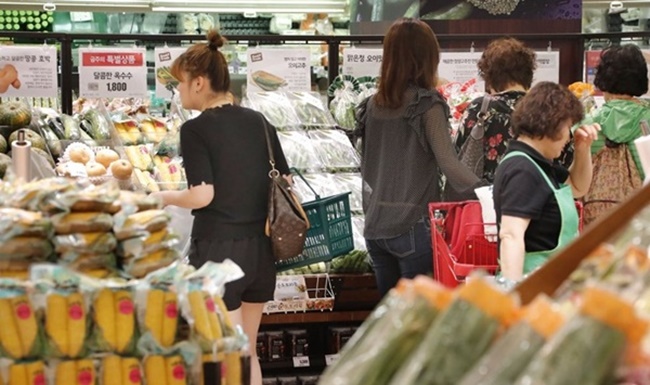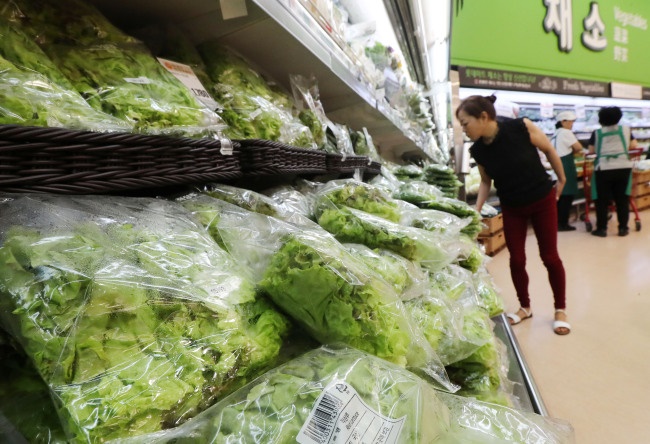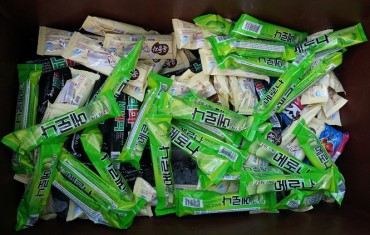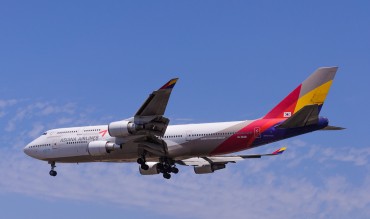
According to the Worldwide Cost of Living Report 2017 from the Economist Intelligence Unit, the inflation rate in South Korea was highest among the 133 countries surveyed, while it was also branded as the country with the sixth-highest cost of living. (Image: Yonhap)
SEOUL, Dec. 12 (Korea Bizwire) — A growing number of South Koreans are expressing concern over the soaring cost of living in their country.
According to the Worldwide Cost of Living Report 2017 from the Economist Intelligence Unit, the inflation rate in South Korea was highest among the 133 countries surveyed, while it was also branded as the country with the sixth-highest cost of living.
The EIU report, which compares prices of over 150 products and services including food, clothes, accommodation, transport, and education, revealed that bread and wine were more expensive in Seoul than anywhere else in the world.
One kilogram of bread sold for $14.82 in the South Korean capital, while the price of a bottle of wine averaged nearly $27.
Against this backdrop, South Koreans living abroad have begun reporting their average expenditures on grocery shopping in different countries to bring attention to the soaring living costs back home, particularly for food.
Kim, a 24-year-old who lived in the Czech Republic on a student exchange program, took a photo of 4,600 won worth of groceries bought at a supermarket, consisting of pork neck for two, yogurt, cheese, tofu, and a bag of potato chips.
“I experienced first-hand the stark difference in living costs last year in the Czech Republic. Grocery prices in France and Germany were similar to those of South Korea or even cheaper,” Kim said.
Just like Kim, it’s not a rare sight to see pictures of grocery shopping shared by those living abroad who have seen firsthand the stark difference in food prices between South Korea and other countries.

A growing number of South Koreans are expressing concern over the soaring cost of living in their country. (Image: Yonhap)
In a tweet, a user named mard14***** said, “Groceries from two hours of work at a minimum-wage job in France (24,000 won): 1 kilogram of rice, 280 grams of salmon, 200 grams of prawn, 150 grams of cheese, 300 grams of tomatoes, spring onions, three potatoes, two aubergines and six cans of beer.”
Another person posted a grocery price comparison from Germany, saying “It was about 21,000 won to buy four tomatoes, butter, cabbage, two blocks of mozzarella cheeses, a salad, 750 grams of chicken wings, six bottles of beer, and 450 grams of pork.”
Experts believe the soaring cost of living in South Korea is caused by a number of factors including high commercial rents and expensive production environments.
“Unlike farming industry leaders like Europe and the U.S, South Korea’s small territory raises farming expenses. There are other factors impacting food prices, including high commercial rent prices and weather,” said Kim Kwan-soo, a professor of agricultural economics and rural development at Seoul National University.
Environmental factors did play a role this year, including the major bird flu and foot-and-mouth disease outbreaks that led to soaring egg prices, and heat waves and heavy rains that wreaked havoc on vegetable prices over the summer.
However, others argue it is hard to measure and compare the food prices in different countries on equal terms.
“Despite speculation that South Korea’s cost of living is higher than other developing countries, it is thought to be on a similar level in actuality. Since standards for cost-of-living indexes or research methods vary depending on the country, it is hard to say the comparisons are 100 percent accurate,” an official at the finance ministry said.

hThe EIU report, which compares prices of over 150 products and services including food, clothes, accommodation, transport, and education, revealed that bread and wine were more expensive in Seoul than anywhere else in the world. (Image: Yonhap)
Along with grocery shopping, the cost of dining out also rose, particularly dishes and drinks widely enjoyed by the South Korean public such as kimbap, jajangmyeon and soju, growing at a rate twice as high as the overall inflation rate in November.
Despite growing concerns, consumer price inflation in November was the lowest this year, falling under the 1 percent range for the first time in three months, according to data from Statistics Korea.
Ashley Song (ashley@koreabizwire.com)







Dear all,
South Korea even though is a developed country but still is not a G 7 country. So it should try to be at par with G 7
Country on all parameters including cost of living / inflation. Also it should export medical education and other branches of education just like G7 countries. And in this fashion show case it’s achievement to the world.